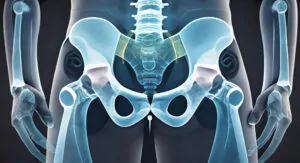Tying Your Shoes After Hip Replacement Surgery
How Long After Hip Replacement Can I Tie My Shoes? — You can typically start tying your shoes after a hip replacement once your surgeon gives you the go-ahead, which is usually around 4 to 6 weeks post-surgery. However, it’s important to follow your surgeon’s specific instructions and consider factors like flexibility and comfort in your individual recovery.
Navigating Life Post-Surgery: How Long Until You Can Tie Your Shoes
Hip replacement surgery is a transformative journey towards renewed mobility. As you embark on this path, it’s natural to wonder about the simple tasks that make up your daily routine. One common question that arises is, “How long after hip replacement can I tie my shoes?” Let’s delve into this query and unveil the keys to regaining your independence.
Embracing the Healing Process
After undergoing hip replacement surgery, it’s crucial to acknowledge
that each individual’s recovery timeline may vary. The journey to tying your shoes post-surgery is a gradual process that requires patience and commitment to your rehabilitation plan.
The Initial Weeks: Patience is Key
In the initial weeks following your hip replacement surgery, your focus should be on rest and gentle movement. Attempting to tie your shoes too soon may strain the healing process. During this period, consider enlisting the help of a loved one or utilizing adaptive tools to make the process more manageable.
Progressing into the Second Month
As you enter the second month of recovery, you’ll likely experience increased flexibility and reduced discomfort. This is an opportune time to explore gentle stretches and exercises recommended by your healthcare professional. These activities can contribute to improved range of motion, bringing you one step closer to the day you can comfortably tie your shoes independently.
Post-Surgery Milestones
1. Week 1-2: Rest and Recovery
During the first couple of weeks, prioritize rest and gentle movement. Resist the temptation to bend excessively or put undue stress on the replaced hip. Basic shoe tying may still be challenging at this point.
2. Week 3-4: Gradual Movement
As you enter the third and fourth weeks, your surgeon or physical therapist may encourage gradual movement. Simple stretches and bending exercises will be introduced, but proceed with caution when attempting to tie your shoes.
3. Week 5-8: Controlled Mobility
By the fifth to eighth weeks, controlled mobility becomes the focus. Follow the guidance of your healthcare team as you engage in more comprehensive exercises. Tying your shoes may become feasible, but use adaptive tools or assistance if needed.

Overcoming Challenges: Tips for Shoe Tying
1. Choose the Right Footwear
Opt for shoes with elastic laces or Velcro closures during the initial recovery phase. This eliminates the need for intricate tying and ensures a snug fit without straining your hip.
2. Seated Shoe Tying
In the early stages, consider sitting down to tie your shoes. This minimizes strain on your hip joint, making the process more manageable and comfortable.
3. Assistive Devices
Utilize assistive devices like long-handled shoehorns or reachers to make the task of tying your shoes more accessible. These tools reduce the need for excessive bending.
Personalized Rehabilitation Strategies
Physical Therapy: A Key Component
Engaging in a tailored physical therapy program is instrumental in expediting your recovery. Your physical therapist will guide you through exercises aimed at strengthening the muscles around your hip joint, enhancing stability, and promoting overall mobility.
Listen to Your Body
It’s essential to pay attention to your body’s signals during the recovery process. If you experience any pain or discomfort while attempting to tie your shoes, it’s advisable to take a step back and consult with your healthcare provider. Gradual progress is paramount to a successful and sustainable recovery.
Celebrating Milestones: The Road to Independence
Achieving Independence
The moment you can independently tie your shoes marks a significant milestone in your post-hip replacement journey. This achievement signifies the restoration of your everyday activities and a return to a more self-reliant lifestyle.
Ongoing Maintenance
Even after you’ve regained the ability to tie your shoes, it’s crucial to continue with any prescribed exercises and follow-up appointments. This ongoing commitment to your health ensures the longevity of the surgical benefits and promotes a sustained, active lifestyle.
Check out my new post on “What is Zuds Shoes Size?“

Diet Plan After Hip Replacement Surgery
1. Adequate Protein:
- Include lean sources of protein in your diet such as poultry, fish, lean meats, eggs, dairy, legumes, and tofu.
- Protein is essential for tissue repair and muscle strength, which is important during the recovery process.
2. Calcium and Vitamin D:
- Include sources of calcium (e.g., dairy products, leafy green vegetables, fortified plant-based milk) to support bone health.
- Ensure sufficient vitamin D intake, either through sunlight exposure or dietary sources (e.g., fatty fish, fortified dairy or plant-based milk, egg yolks).
3. Omega-3 Fatty Acids:
- Include sources of omega-3 fatty acids, such as fatty fish (salmon, mackerel), flaxseeds, chia seeds, and walnuts.
- Omega-3s have anti-inflammatory properties and may support joint health.
4. Fiber-Rich Foods:
- Include plenty of fruits, vegetables, whole grains, and legumes to support digestive health and maintain a healthy weight.
- Fiber can also help manage constipation, which may be a concern during recovery.
5. Hydration:
- Stay well-hydrated by drinking an adequate amount of water throughout the day. Proper hydration supports overall health and aids in recovery.
6. Anti-Inflammatory Foods:
- Include foods with anti-inflammatory properties, such as berries, cherries, turmeric, ginger, and green leafy vegetables.
- These foods may help manage inflammation and support the healing process.
7. Limit Processed Foods:
- Reduce intake of processed and packaged foods, as they may contain excess sodium and additives that could contribute to inflammation.
8. Controlled Portions:
- Be mindful of portion sizes to help manage weight. Excess weight can put additional stress on the joints.
9. Balanced Meals:
- Aim for balanced meals that include a combination of protein, healthy fats, and carbohydrates to provide sustained energy.
Remember, individual dietary needs vary, and your healthcare team can provide personalized advice based on your specific health status and goals. Furthermore, any changes to your diet should be made gradually, and it’s essential to listen to your body’s signals during the recovery process.

Safeguarding Your Healing Hip: Precautions and Warnings After Hip Replacement Surgery
Essential Precautions Post-Hip Replacement Surgery
Understanding and adhering to necessary precautions after hip replacement surgery is paramount for a successful recovery. Here are vital guidelines to safeguard your healing hip:
1. Movement Limitations in the Initial Weeks
During the first few weeks post-surgery, limit movements that involve excessive bending or twisting. Follow your healthcare professional’s advice on permissible activities to avoid straining the newly replaced hip joint.
2. Weight-Bearing Restrictions
Adhere to any weight-bearing restrictions provided by your surgeon. This precaution ensures the stability and longevity of the hip replacement. Avoid putting undue stress on the hip through excessive standing or lifting heavy objects.
3. Follow Medication Schedule
Strictly adhere to the prescribed medication schedule. Pain management is crucial for a comfortable recovery. Report any unexpected side effects to your healthcare provider promptly.
4. Prevent Infection: Maintain Wound Care
Minimize the risk of infection by diligently following wound care instructions. Keep the surgical site clean, dry, and monitor for any signs of infection, such as redness, swelling, or unusual discharge.

Warning Signs: When to Seek Immediate Medical Attention
Despite taking precautions, it’s crucial to recognize warning signs that may indicate complications. Seek immediate medical attention if you experience:
1. Persistent Pain or Swelling
Unusual or persistent pain and swelling around the hip joint could signify complications. Report these symptoms promptly to your healthcare provider.
2. Sudden Onset of Fever
A sudden onset of fever may indicate an infection. If you experience fever, especially accompanied by other concerning symptoms, contact your healthcare professional without delay.
3. Changes in Mobility
Any unexpected changes in mobility or difficulty moving the hip joint should be addressed immediately. These changes may indicate issues with the implant or surrounding tissues.
4. Abnormal Wound Symptoms
Pay close attention to the surgical wound. If you notice increased redness, warmth, or discharge, or if the wound doesn’t appear to be healing as expected, consult your healthcare provider promptly.
Long-Term Precautions for Optimal Hip Health
Beyond the initial recovery phase, adopt these long-term precautions to ensure the continued well-being of your hip replacement:
1. Regular Follow-Up Appointments
Attend scheduled follow-up appointments with your surgeon to monitor the progress of your hip replacement and address any emerging concerns.
2. Low-Impact Exercise
Engage in low-impact exercises recommended by your healthcare provider. These activities promote joint flexibility and muscle strength without compromising the integrity of the hip replacement.
3. Maintain a Healthy Weight
Manage your weight to reduce stress on the hip joint. A healthy weight contributes to the longevity of the hip replacement and overall joint health.
What to Avoid?
Navigating life post-hip replacement surgery involves not just knowing what to do but also understanding what to avoid. Here’s a comprehensive guide on what to steer clear of to ensure a seamless recovery for your healing hip:
1. High-Impact Activities
Avoid engaging in high-impact activities such as running, jumping, or strenuous sports. These activities can place excessive stress on the hip joint, compromising the integrity of the replacement.
2. Crossing Your Legs
Refrain from crossing your legs when sitting or lying down. Crossing the legs can lead to instability and strain on the hip joint, hindering the healing process.
3. Excessive Bending
Limit excessive bending at the hip in the early stages of recovery. Activities like tying your shoes or reaching for objects on the ground should be approached with caution to prevent unnecessary stress on the replaced hip.
4. Twisting Movements
Avoid sudden twisting movements of the hip, especially during the initial weeks post-surgery. Twisting can disrupt the healing process and potentially lead to complications.
5. High-Heeled Shoes
Steer clear of high-heeled shoes during the recovery period. Elevated heels can alter your gait and place uneven pressure on the hip joint, affecting the alignment of the replacement.
6. Prolonged Sitting or Standing
Avoid prolonged periods of sitting or standing without breaks. Change positions regularly to prevent stiffness and discomfort, promoting better circulation and overall hip health.
7. Delaying Follow-Up Appointments
Do not postpone or skip follow-up appointments with your surgeon. Regular check-ups are crucial for monitoring the progress of the hip replacement and addressing any emerging issues promptly.
8. Ignoring Pain Signals
Pay attention to pain signals and do not ignore persistent discomfort. Pain may indicate potential issues with the hip replacement or surrounding tissues, requiring prompt evaluation by your healthcare provider.
9. Neglecting Rehabilitation Exercises
Consistently engage in prescribed rehabilitation exercises. Neglecting these exercises can impede the recovery process and compromise the strength and flexibility of the hip joint.
Conclusion: A Journey Worth Taking
In conclusion, the question of “How long after hip replacement can I tie my shoes?” is an integral aspect of the recovery process. By understanding the stages of rehabilitation, embracing personalized strategies, and celebrating small victories, following diet plan, you pave the way for a fulfilling and active life post-surgery. Remember, the journey may take time, but the rewards of regained mobility and independence are well worth the effort.
From the initial days of rest and controlled mobility to the gradual reintroduction of activities like tying your shoes, every step matters. Embracing patience, adhering to professional guidance, and incorporating adaptive measures are the cornerstones of a successful recovery.
In steering clear of high-impact activities, mindful movements, and diligently following precautions, you actively contribute to the longevity and health of your hip replacement. The what-to-avoid guide serves as a roadmap, empowering you to make informed choices that safeguard your healing hip and promote overall well-being.
Remember, your recovery is a journey, not a race. Celebrate the milestones, no matter how small, and stay attuned to your body’s signals. Regular follow-up appointments, commitment to rehabilitation exercises, and a vigilant eye for warning signs are your allies in this transformative process.
By embracing these guidelines, you pave the path to not just a functional hip but a resilient and thriving post-surgery life. Your commitment to nurturing and protecting your healing hip sets the stage for a future filled with mobility, independence, and a renewed sense of vitality. Here’s to your journey of triumph and a resilient recovery.

Frequently Asked Questions About Hip Replacement Recovery
How long after hip replacement can I resume tying my shoes independently?
The timeline for regaining the ability to tie your shoes independently varies from person to person. Generally, it could take 4 to 6 weeks weeks to a few months, depending on your individual healing process and adherence to rehabilitation guidelines.
Is there a specific exercise routine to speed up the recovery process?
Yes, engaging in a personalized physical therapy program is highly recommended. Your physical therapist will design exercises targeting muscle strength, joint flexibility, and overall mobility to expedite your recovery.
Can I expect pain while trying to tie my shoes after hip replacement?
In the initial stages of recovery, some discomfort or pain may be experienced. However, if persistent or severe pain occurs during any activity, it is advisable to consult with your healthcare provider to ensure proper guidance.
Are there adaptive tools available to assist with shoe tying during the recovery period?
Certainly, there are adaptive tools designed to make tasks like shoe tying more manageable during the initial weeks post-surgery. These tools can reduce strain and enhance independence while promoting a smooth recovery.
When can I return to regular physical activities, such as walking or light exercises?
The timeline for resuming regular physical activities varies, but most individuals can gradually reintroduce light exercises and walking into their routine within the first few weeks. However, always follow your healthcare provider’s recommendations for a safe and effective recovery.
What signs indicate that I should slow down or modify my activities during recovery?
Listen to your body. If you experience increased pain, swelling, or discomfort during or after activities, it’s crucial to take a step back and consult with your healthcare provider. Modify your activities as needed to ensure a steady and healthy recovery.
Can hip replacement surgery impact my overall lifestyle in the long term?
Hip replacement surgery is designed to enhance your quality of life by alleviating pain and improving mobility. With proper rehabilitation and ongoing maintenance, most individuals can expect to return to a fulfilling and active lifestyle, enjoying activities they may have once found challenging.
What role does nutrition play in the hip replacement recovery process?
Maintaining a balanced and nutritious diet is vital for the healing process. Adequate nutrients support tissue repair and overall well-being. Consult with your healthcare provider or a nutritionist to ensure you are meeting your specific dietary needs during recovery.
How often should I attend follow-up appointments after hip replacement surgery?
Regular follow-up appointments are crucial for monitoring your progress and addressing any concerns. Typically, your healthcare provider will schedule follow-ups in the weeks and months following surgery to ensure a smooth and successful recovery.
Are there specific lifestyle changes recommended post-hip replacement?
While individual recommendations may vary, adopting a healthy and active lifestyle is generally encouraged. Regular exercise, a balanced diet, and proper self-care contribute to the long-term success of your hip replacement and overall well-being.
Remember to consult with your healthcare provider for personalized advice tailored to your unique situation and recovery journey.






